-
Project ONE groundbreaking
On 15 December, a symbolic sheet pile went into the ground in the port of Antwerp for Project ONE, INEOS’ innovative ethane cracker. In the presence of local politicians, partners, neighbor companies, local residents and the press, the Project ONE team, celebrated this special milestone.
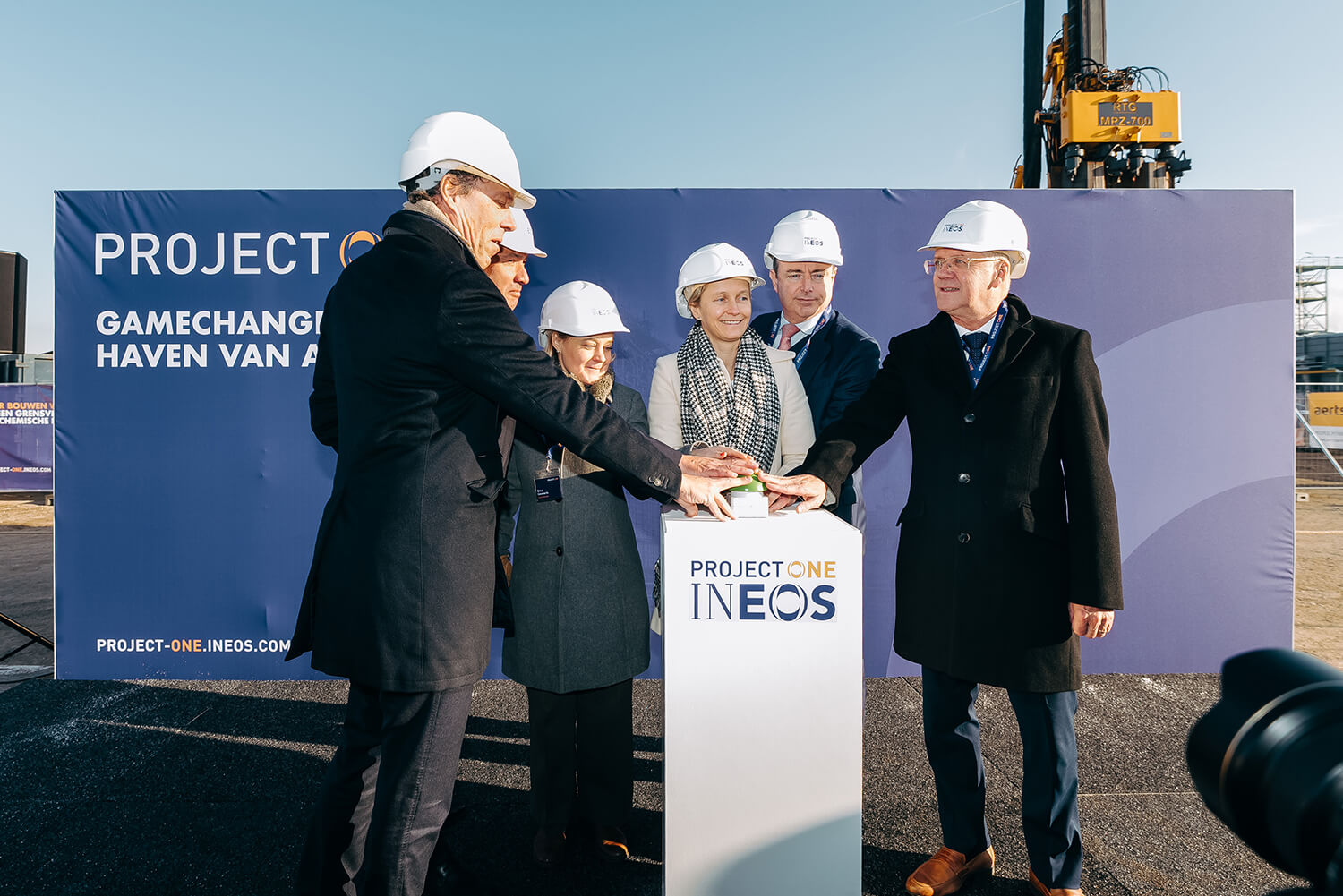
-
Project One: why, what, how?
The essence of Project ONE explained in less than 5 minutes. The largest industrial project, the most sustainable cracker, designed in a future-proof way.
-
Explained: the project approach
“This is a mega project and timing is always a challenge. But so far we have managed to stay on track and that is quite exceptional. Moreover, we want to do that in a very safe way, by virtue of the quality of our teams. That’s something to be super proud of.” We speak to Maarten Griep, INEOS site preparation Construction Manager, who tells us how to make such a mega project a reality.
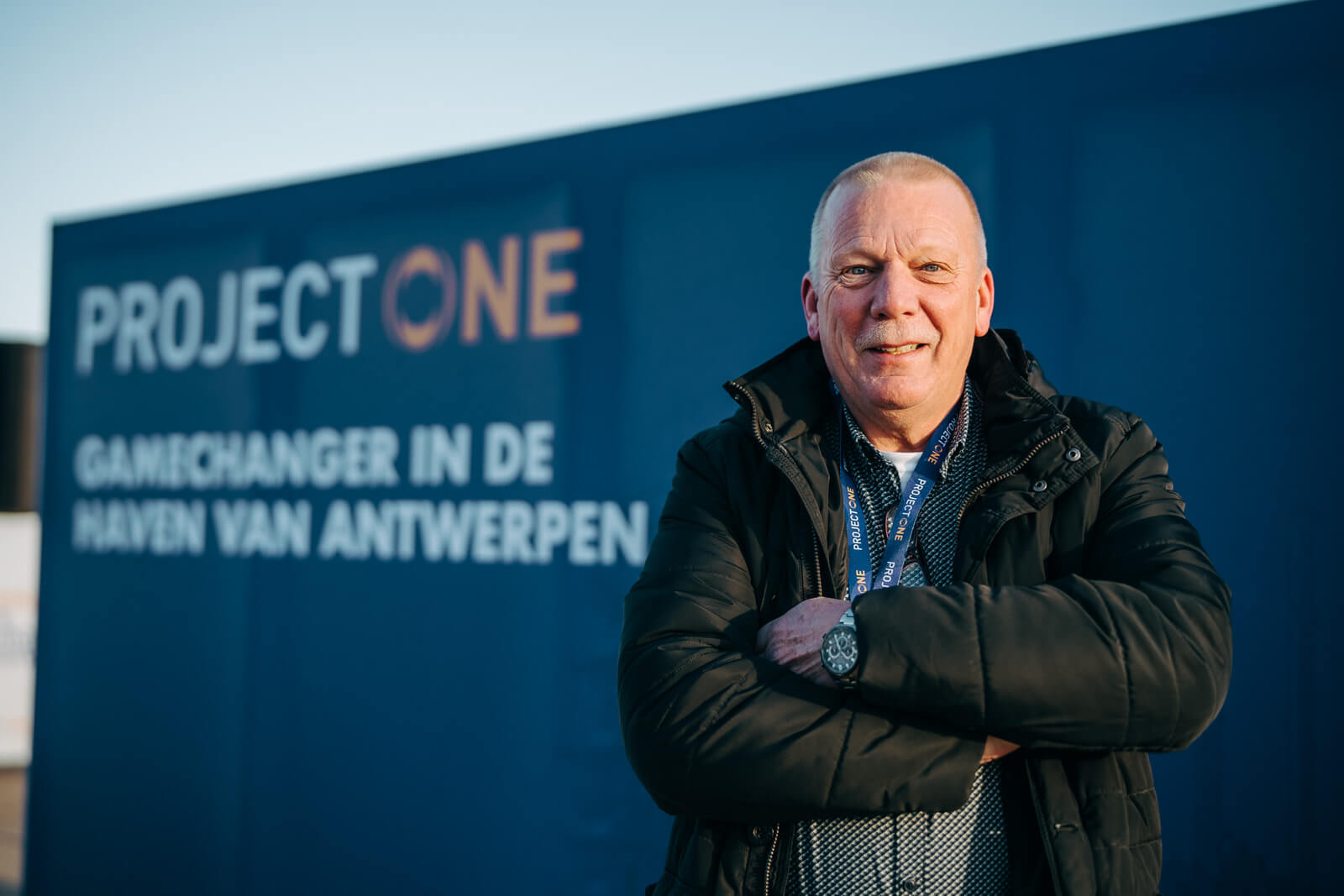
The first stone has been laid, or rather, the first sheet piling has been installed… but now it is just beginning. After several years of studies and preparation, the project is entering the construction phase. “The realisation of a unique project such as Project One is tackled by cutting it into small pieces. Of course, I don’t do it alone, we have a project management team looking at all these different parts. Because, of course, such a cracker does not suddenly appear. The project consists of four important phases. As always, everything starts with an outline of an idea, a “feasibility plan”. In short: is it possible? If so, then you develop that plan in more detail, and then in a concrete building plan in a third phase. Once the cracker is built, the last so-called “commissioning” phase begins, which includes the start-up and tests to verify whether everything works as planned. If successful, the project will be transferred to the team that handles the day-to-day operations.
The construction phase has thus really begun. In addition to the actual ethane cracker, an installation with a footprint of about 75,000 m², there will also be an administrative campus with offices, company restaurant and gym, bicycle storage, etc., as well as the central control room, various workshops and warehouses, etc. Not to mention the storage tanks and utilities, where the large ethane tank will characterise the image of the site. Over the past few months, and even now, we have mainly been working on making the site ready for construction.”
The INEOS project team itself consists of some 200 people, and about 60 people are already working on the site itself. That will be more than 3,000 at the peak of the works. To prepare for this, quite a few temporary facilities are needed: in total no less than 1,500 modular office units will be installed. Our partner for this is Warsco. These units are EPB compliant and are equipped as changing rooms, offices, dining rooms and sanitary facilities. For the sanitary facilities we only use rainwater, by the way. -
Look at our site!
In realising Project One, we continuously take into account the impact on the environment. All excavated soil and pumped water shall be closely monitored and if necessary purified . All removed vegetation is well compensated. We take maximum measures to limit noise, says Herwig Teughels, Lead Environmental Engineer & Environmental Regulatory Expert.
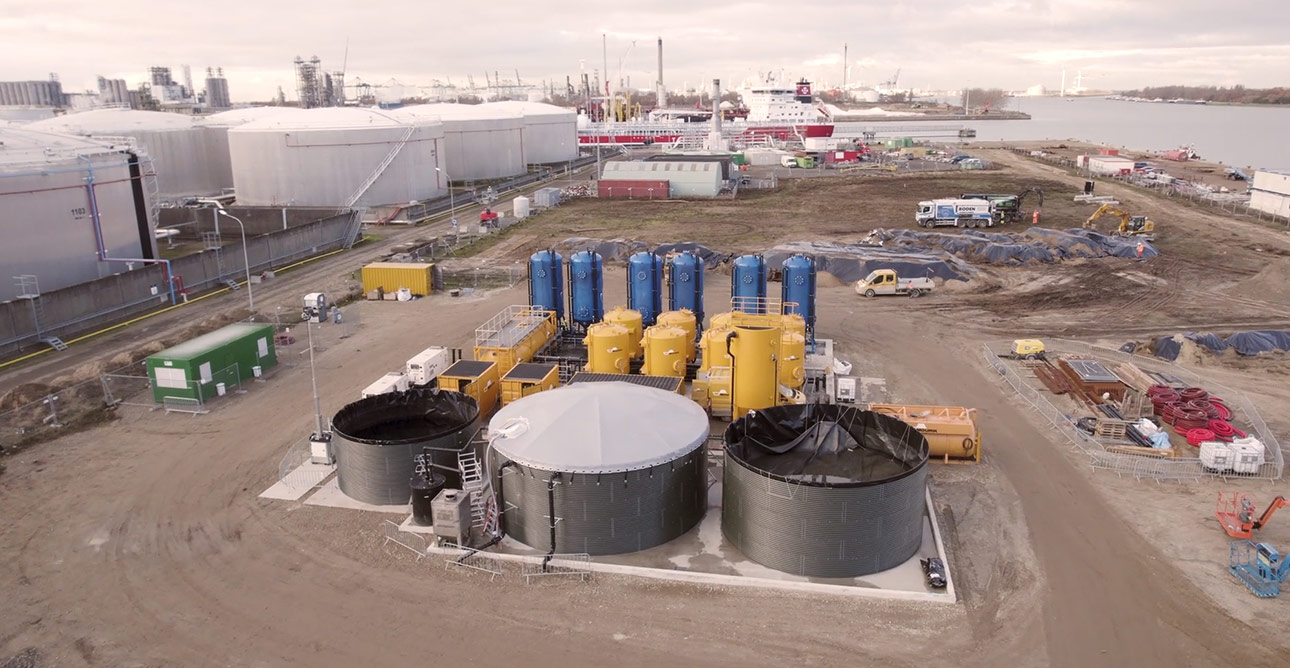
“The removed vegetation is offset by several reforestation initiatives in Flanders. All trees over the age of 22 are offset twice. We also plant 30 ha of additional forest in Flanders.
The top layer of topsoil that we are currently digging 30 cm deep encompasses no less than 300,000 cubic metres, which requires strict organisation. Every m³ of soil has been examined for possible contamination and if contamination is detected, this soil is treated separately in a specialised processing centre. Removal there is all done by inland vessel. And where the topsoil has been removed, we install sheet piling. The aim is to push 4 km of sheet piling 8 metres deep into the clay layer along the site boundary, in a way that hardly generates any noise. Often, sheet piling is “hammered” into the ground, causing a lot of noise and vibration. That is why we have opted for a smarter technique in which the piles are “pushed” into it. The sheet piling is necessary to be able to isolate the groundwater from the surrounding industrial sites. Compare it to a giant bathtub. Within the bathtub, we can reduce the water level on our own land in a very targeted local way to allow the construction activities to continue smoothly, without affecting the groundwater levels on the neighbouring sites. As part of the precautionary approach, all the pumped groundwater is sent via a specific water treatment plant before it goes to the canal dock. All this is also continuously monitored by independent environmental experts from Arcadis.”
-
Safety first
“We are building this cracker in the safest way possible. We aim for a site without accidents, we do everything we can to achieve this and we are succeeding so far.” Anne-Marie Verrelst is the INEOS HSSE Manager (Health Safety Security Environment).
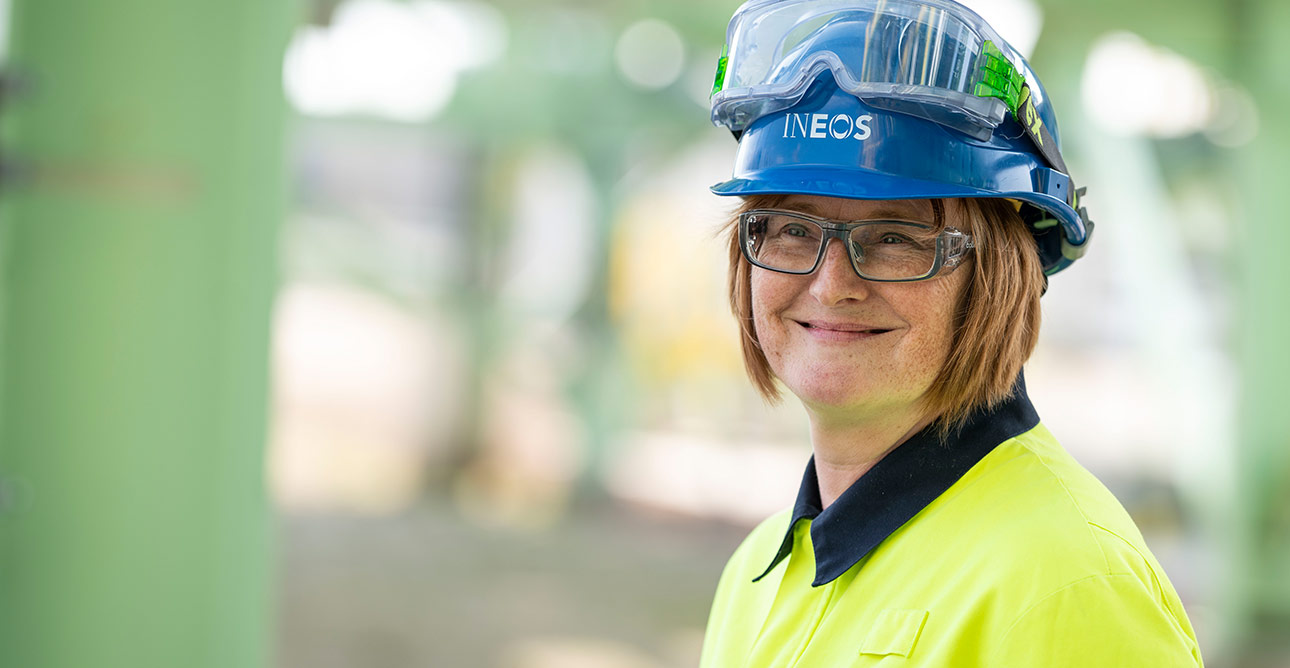
“INEOS sets the bar high. From the outset, our prevention team has contributed to the design of a sustainable and safe installation and also to the organisation of a safe and environmentally conscious construction site. The fact that we achieve this is mainly due to the expertise of my team members, all experts in their field. For example, there is someone who focuses on process safety and operational safety and there is an expert who works on the “human factor” (ergonomics, personal protective equipment, etc.). Another colleague is responsible for emergency planning and medical intervention, while an extra team member has his hands full with the security aspect (who goes where, access control). Two more oversee the environmental factors and there is also someone who coordinates safety training.
Now that we have started the ‘on-site’ implementation, it is also necessary to support the site team on a daily basis. More specifically, a very experienced Construction SHE (Safety, Health and Environment) Manager, several SHE supervisors and a safety coordinator for temporary and mobile workplaces are already on site daily. That team will certainly grow in the near future.
To date, we have been working on our site without accidents and that is also the long-term objective. Specific example: we have reduced the speed on the site from 30 km/h to 15 km/h to work even more safely. At our request, most site vehicles were effectively limited to this speed.
After all, we are strict on safety. We don’t compromise on that.’
-
Project One in staggering figures
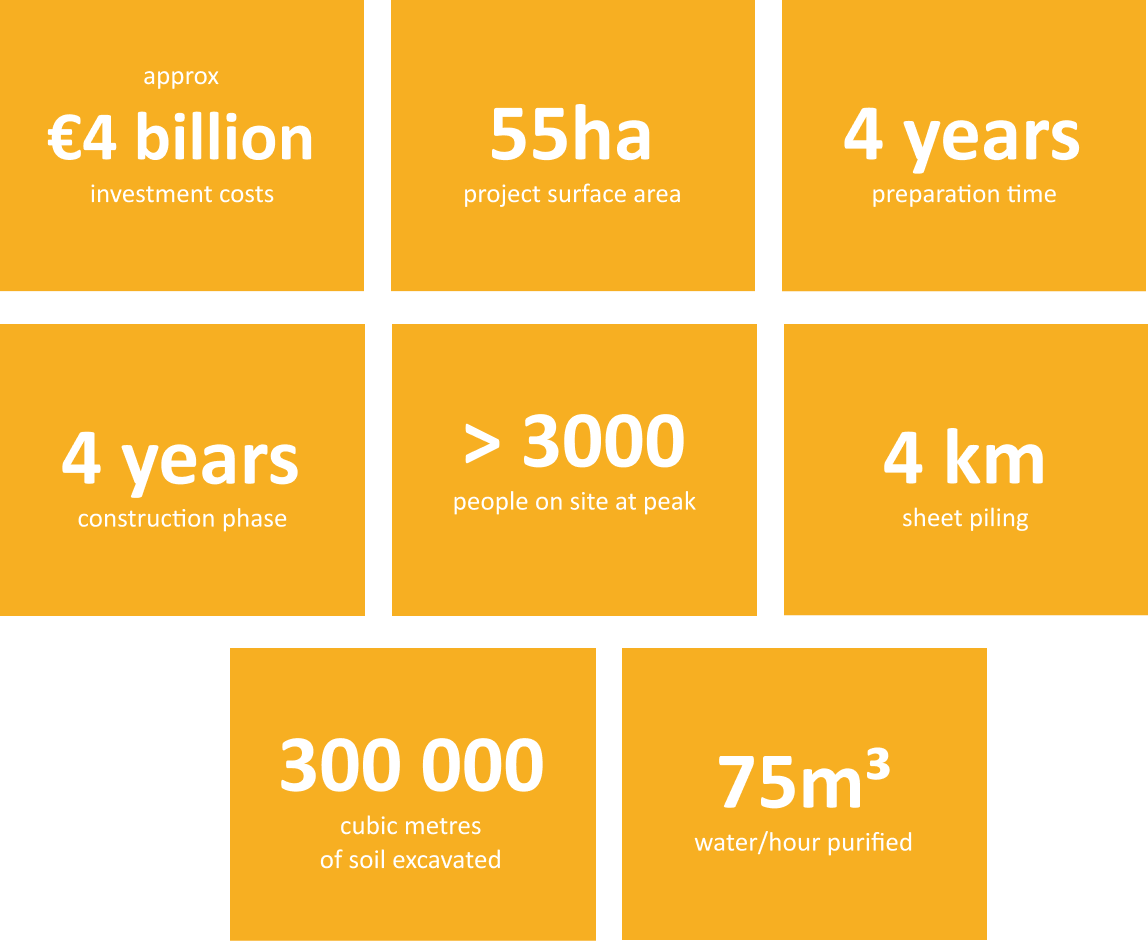
-
Meet the contractor
“This is a special project for Mourik-Aertssen: it is our biggest project ever, involving all the disciplines that we have at our disposal, and with implementation work at very tight deadlines. The law of large numbers plays a role on this site. Hundreds of pumps are used for the dewatering. This is unprecedented.” Erik Baele and Pieter Claus, project managers of Mourik and Aertssen respectively.
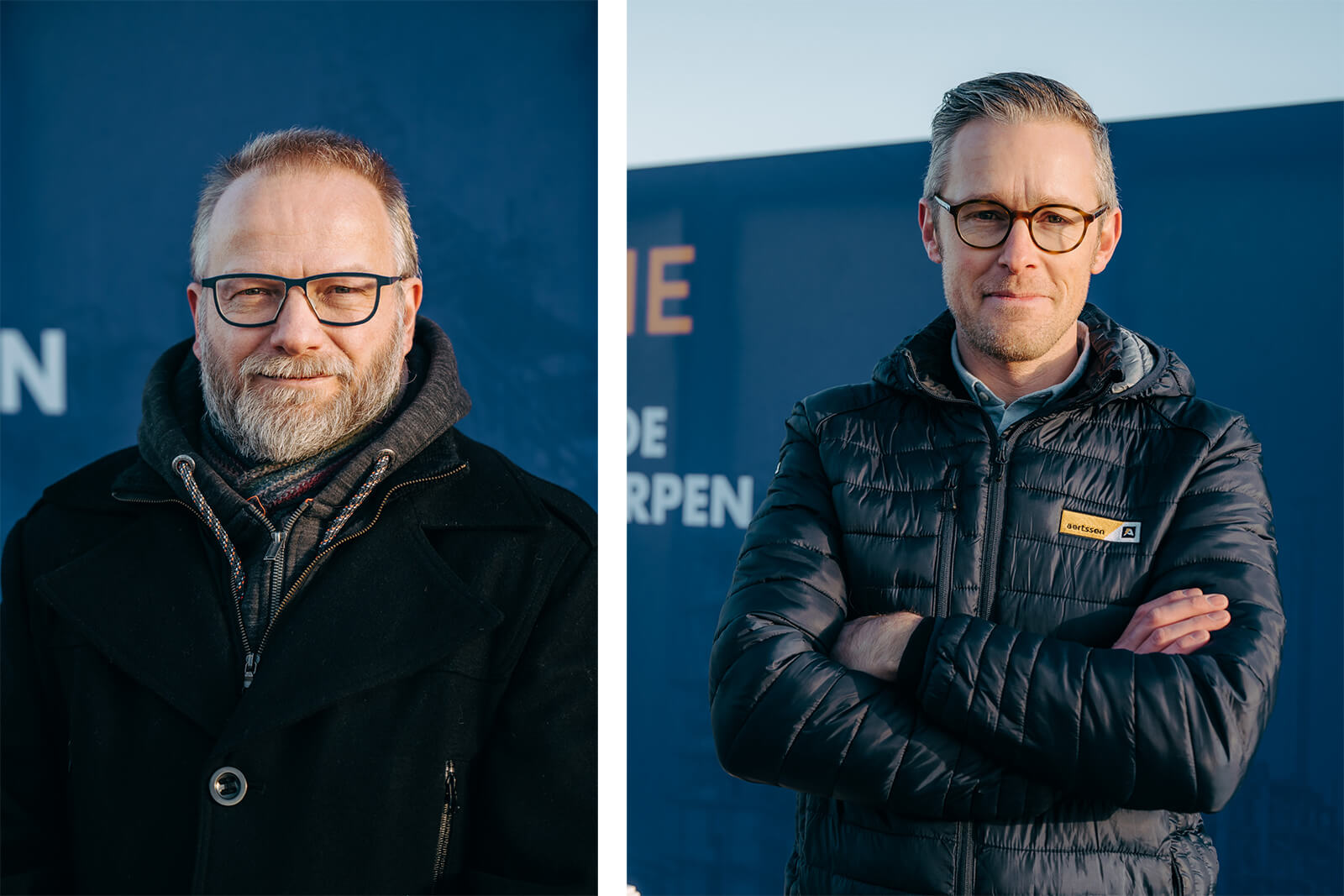
Erik Baele (Mourik) and Pieter Claus (Aertssen Infra)“Every day we have 2 ships that take away 6000 tonnes of soil. This means that 4 ships are constantly travelling to make all transport from the site possible. Arcadis first used soil analyses to accurately map out which soil type must be transported to which soil handler or processing centre. Recently the installation of sheet piling started, at a pace of 250 m/week, so we have less than 2 km to go. On the site, we also lay no less than 26 km of drainage hoses in the ground, at a depth of 5 metres, to be able to control the water level. With the specially built water treatment we can purify 75 m³/hour of groundwater. This purification plant is constructed with various activated carbon filters, which can remove a wide range of possible contamination from the pumped water. We expect to purify 15 to 20 m³ water/hour at optimal speed.
The next phase starts sometime after New Year, then we start digging the construction pits, after which the foundation piles for the cracker can be inserted. INEOS places enormous demands on our site organisation to minimise the environmental impact even at this stage. We can mention 5 measures at the drop of a hat that are stricter than on our other sites.”
‘The strictest site measures’
- Trucks pass through a wheel washing system so that as little sand and dust as possible remains on the tyres;
- A sweeping truck sweeps the streets several times a day so that as little sand and dust as possible remains or spreads;
- All our trucks and rigs must meet the strictest emission standards. This is not limited to words and certificates; it is also tested and reported weekly;
- The dewatering pumps are controlled via a sensor that constantly measures the lowering of the groundwater level. Once the required depth is reached, the pumps and also the generators stop, so that groundwater is not pumped up unnecessarily. This saves ground water, energy and reduces noise.
- The working hours on the site are strictly between 7 a.m. and 6 p.m. This also prevents safety risks. So far, we have not had any accidents on the site. INEOS is very strict about this.
- The speed on the site has been reduced from the usual 30 km/h to 15 km/h. Where possible, the vehicles are also effectively limited to this. This too is about limiting emissions, noise and risks.
-
Better to be a good neighbour… Our contact point
The works may also cause inconvenience to local residents. INEOS therefore has a reporting centre. Are you experiencing any form of inconvenience from the Project ONE site? Then click on the reporting form.
Our neighbours are important to us. We regularly consult with the neighbours and the neighbourhood companies to inform them of the next steps in the construction activities. We have made arrangements with the immediate neighbouring companies to strictly monitor any possible impact on their installations. Despite all the measures we are taking in this large-scale project, we cannot completely exclude the possibility that some form of inconvenience could still occur at certain times. A reporting centre is provided for this purpose; if you would like to report something to us, you can fill in the following reporting form. You will receive a confirmation email immediately after submitting it. INEOS will then respond to your enquiry as soon as possible. You will also find additional information about what the project involves on the website.
Would you rather contact the reporting centre in another way? This can be done at the telephone number +32 (0) 470 995 395 or by sending a letter for the attention of
Project ONE Meldpunt, Scheldelaan 482, 2040 Antwerpen.
